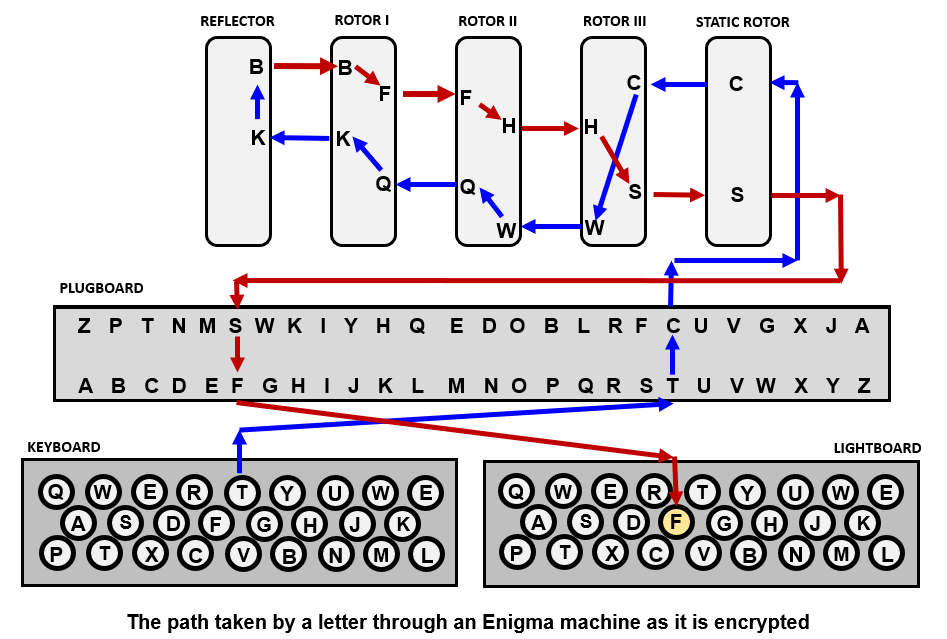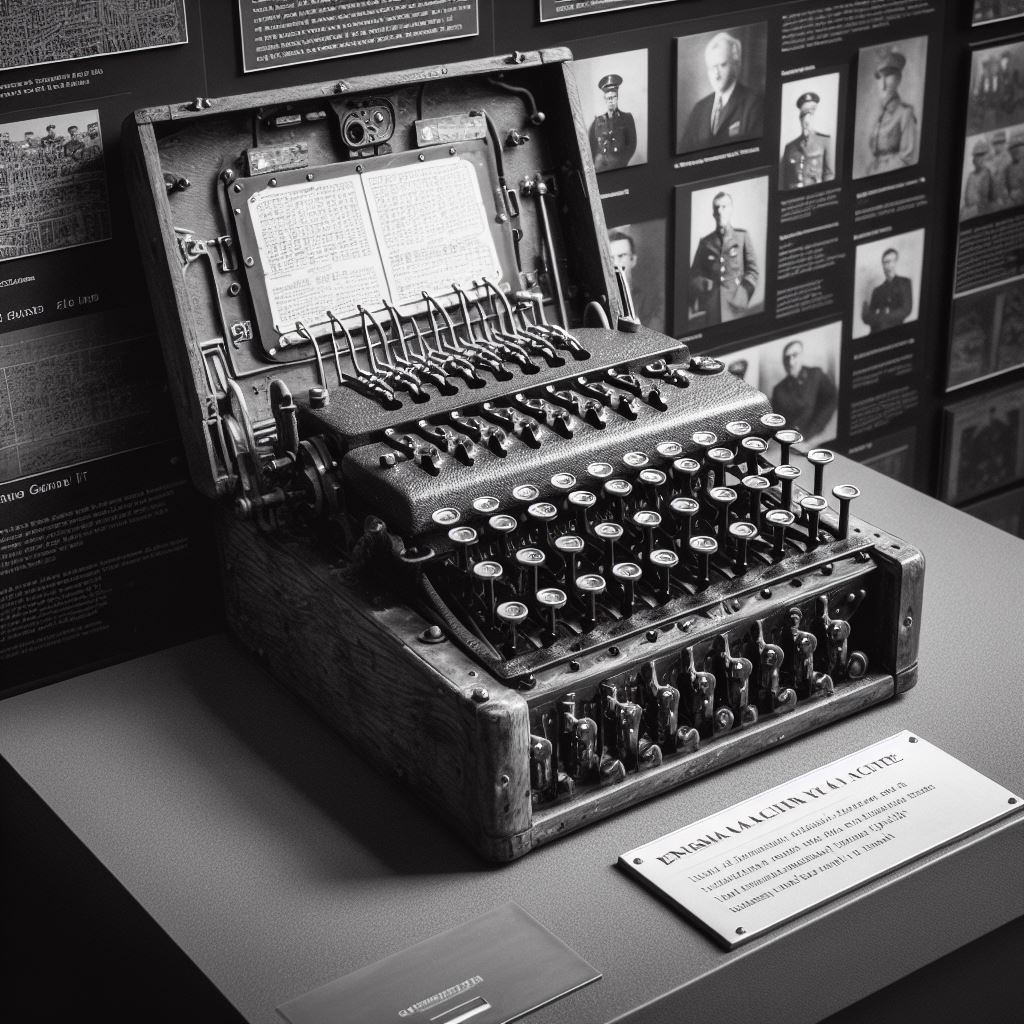The Enigma machine was used to securely deliver information via encrypted messages. It consisted of rotors that substituted typed letters with different ones, encrypting the original message. The device was similar in appearance to a typewriter. When a letter was typed on the keyboard, a different letter lit up on the lampboard; this was the encoded ciphertext. Typing in the ciphertext on the keyboard revealed the decoded message on the lampboard. German engineer Arthur Scherbius produced it at the end of World War I. It was used commercially from the early 1920s and was adopted by the military and government services of several countries, most notably Germany before and during the Second World War. The encryption system was altered on a daily basis at the outbreak of WWII to enhance security after Polish codebreakers laid the ground for further deciphering. During the 1930s and 1940s, an estimated 20,000 Enigma machines were constructed.

Enigma Machine components:
- Keyboard.
- Rotors
- Ring Settings
- Reflector
- Lampboard
- Static Rotor
- Plugboard
The keyboard, resembling a typewriter, was used to enter plaintext (or ciphertext if decrypting).
The machine worked around three rotors, each with 26 positions to match the letters of the alphabet. The rotors applied a simple substitution cipher; each one took a letter and output an alternate one. The rotors moved from right to left, beginning with rotor III.
The alphabetic position in the rotor could be changed in 26 different ways, although the internal wiring was fixed. When the ring setting of a rotor was modified, the letter substitution produced by that rotor changed too. German forces changed the ring settings of the rotors daily to enhance security.
The letter input on the keyboard went through all three rotors and bounced off a reflector before going back through each of the three rotors the other way. The reflector faced the last rotor (rotor I) and directed the letter sent from the rotor back through to it as a different letter. This reversed the direction of the signal and sent it back through the rotors in a different path, thus creating a double-encrypted message.
The illuminated lampboard showed the encrypted ciphertext. Once illuminated, the first of the three rotors turned one position, changing the output of the next pressed letter, regardless of whether it was the same as the first.
The static rotor (or entry wheel) connected the plugboard to the rotors. It directed the keyboard signal to the corresponding position on the first rotor (rotor III).
The plugboard, equivalent to a fourth rotor, sat between the three rotors and the keyboard and lampboard. It had 13 wires that plugged into the Enigma machine and connected pairs of letters. Letters had to be connected in reciprocal pairs, known as stecker pairs. In the example below, we can see the pairs H steckered with C, and T steckered with K. Up to six pairs of letters could be traded in this manner in the first Enigma machines. Later Enigma models pushed this to 10 pairs, which meant the remaining letters were self-steckered – these letters weren’t changed across the plugboard. In the example, we can see that V and X are unchanged.
How does it all work together?
The coder would press a plaintext letter on the keyboard to encrypt it after configuring the Enigma machine. For example, T.
The keyboard signal would travel to the plugboard to find which letter it was paired with. T is paired with K.
K goes through a static rotor, directing the keyboard signal to the position corresponding to K on the input terminal of rotor III. Rotor III connects the signal to its corresponding output terminal on the opposite side, which in this case is a U.
The signal moves through rotor II at its terminal facing U, and leaves the rotor on an output of P. This continues through rotor I, leaving on H.
After leaving rotor I, the signal reaches the reflector. The reflector changes the signal again, from H to D, and goes back through the three rotors but on a different path.
The reflected signal passes back through the static rotor and ends up back at the plugboard. The plugboard looks for the new pairing to the letter (which at this point is W) and finds G.
Finally, the lampboard lights up with the corresponding letter G.
Once this letter has been encrypted, the first rotor is rotated by one position which means the next plaintext letter to be encrypted will go on a different path through the rotors, reflector, and back.
After the first rotor has turned through each of the 26 positions, the next rotor clicks round, and when this rotor has turned through each of the positions, the third does the same. This creates more than 17,000 distinct combinations before the encryption cycle begins again.


